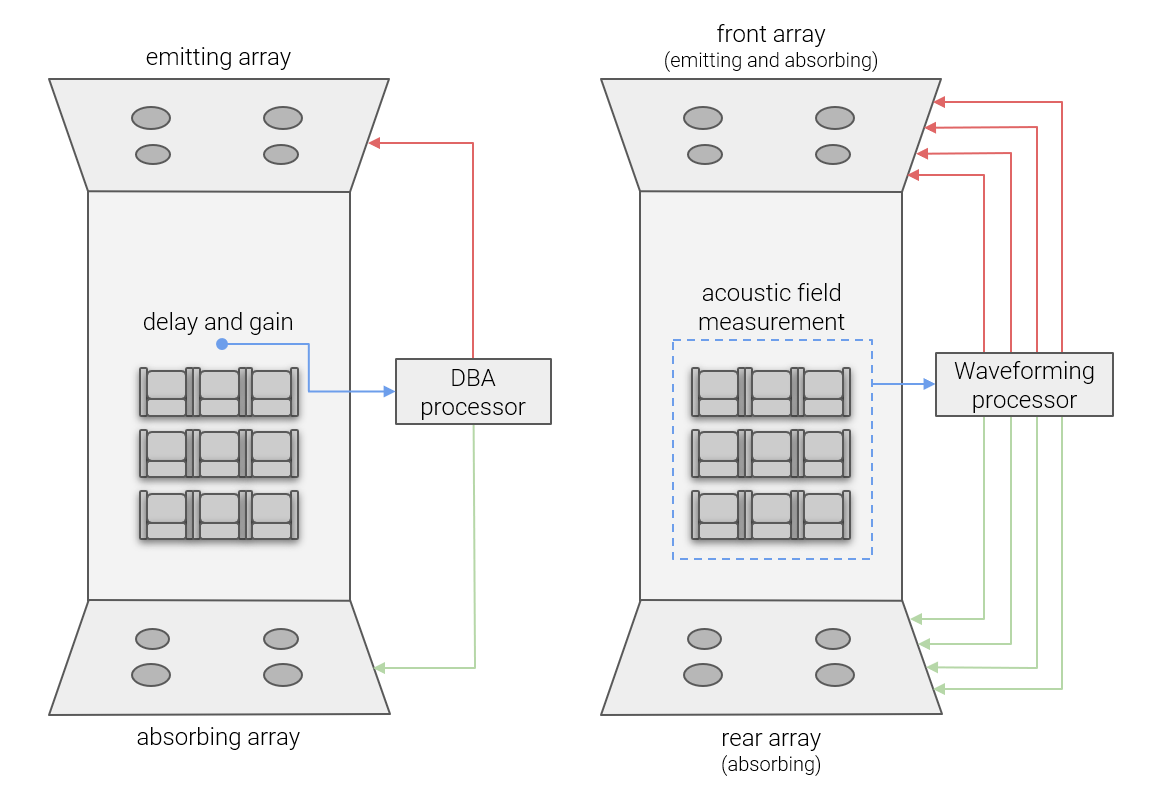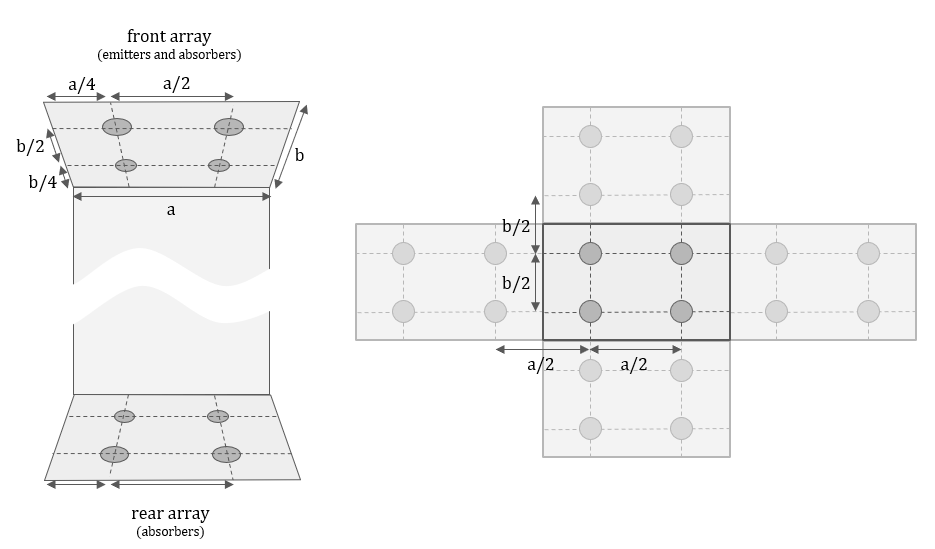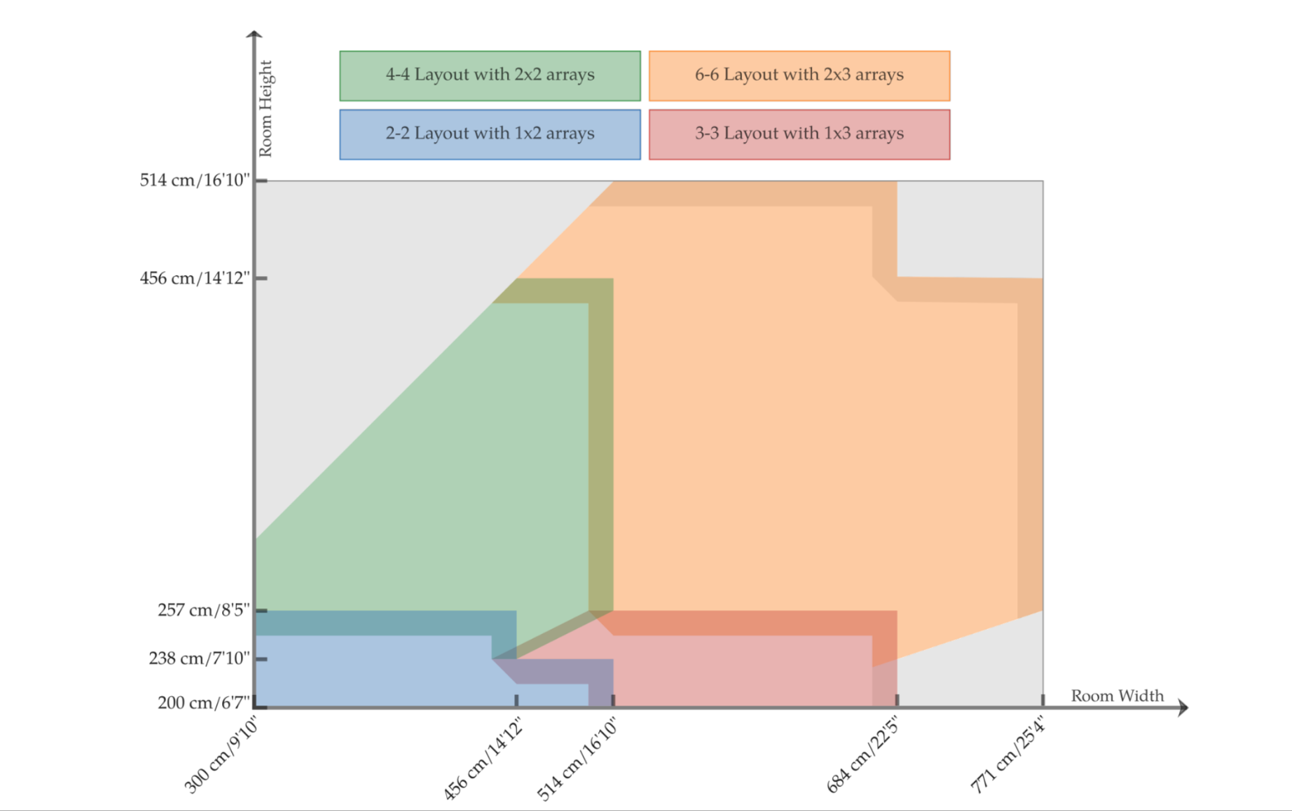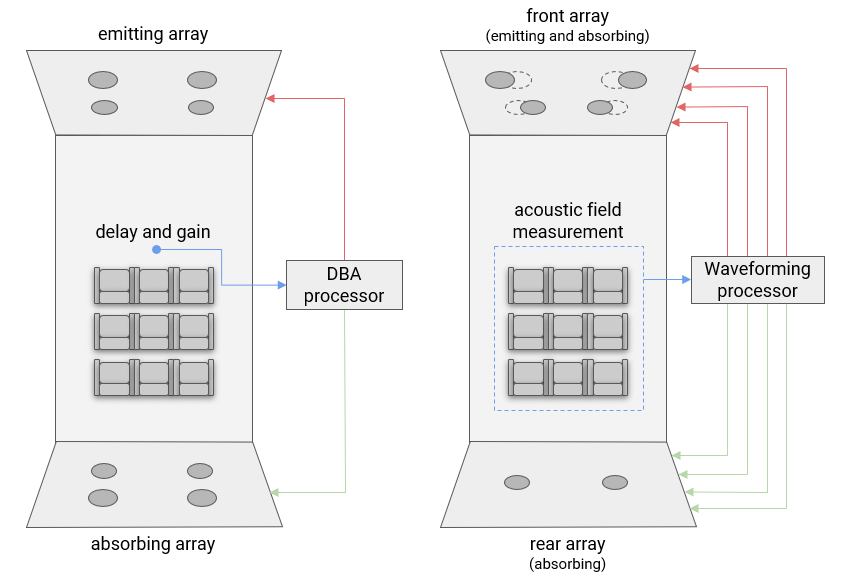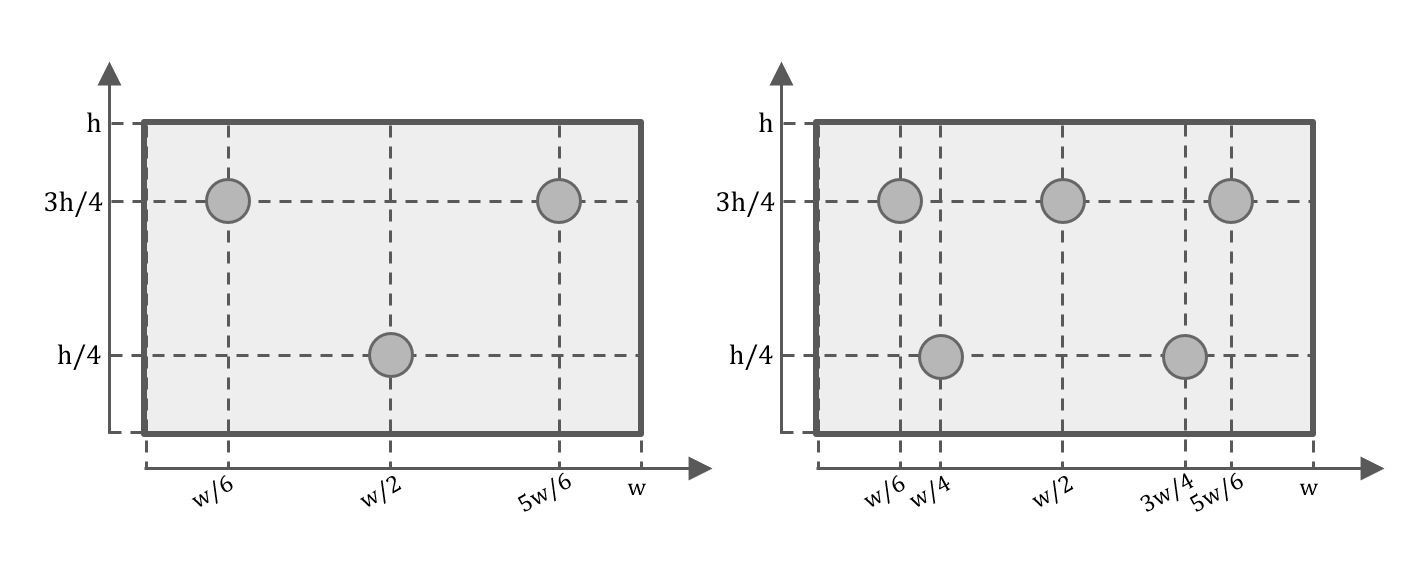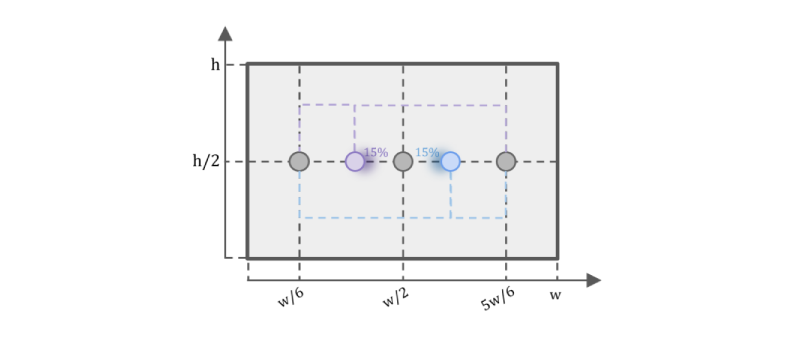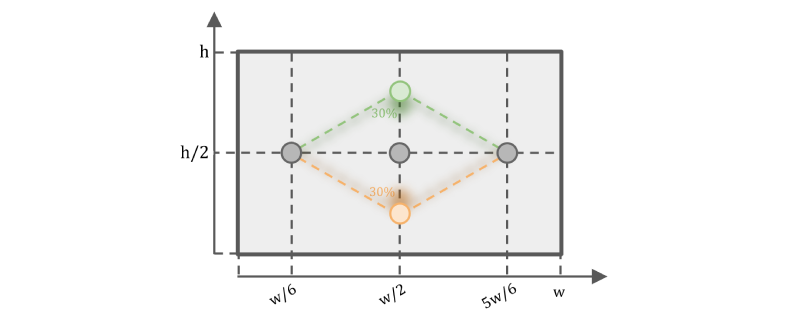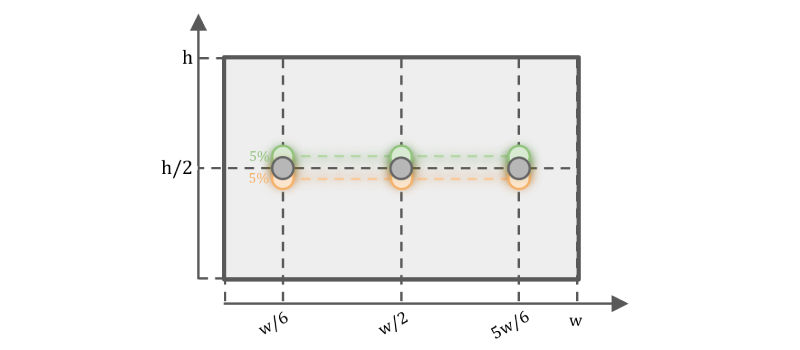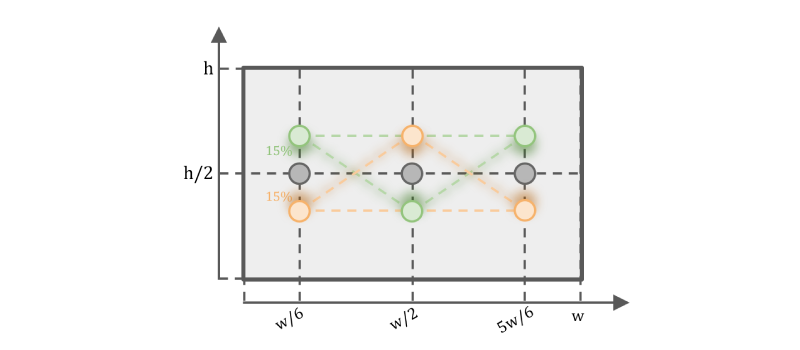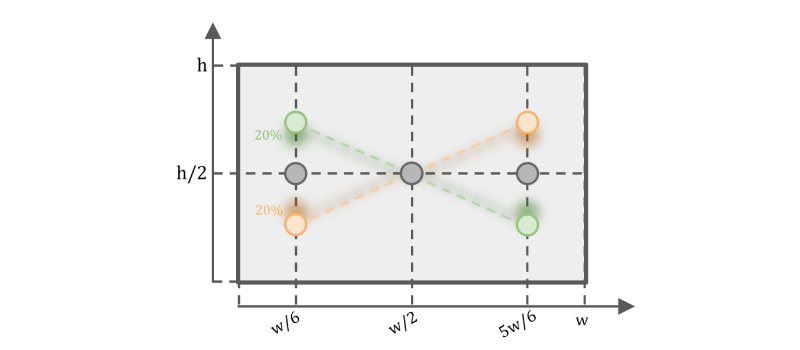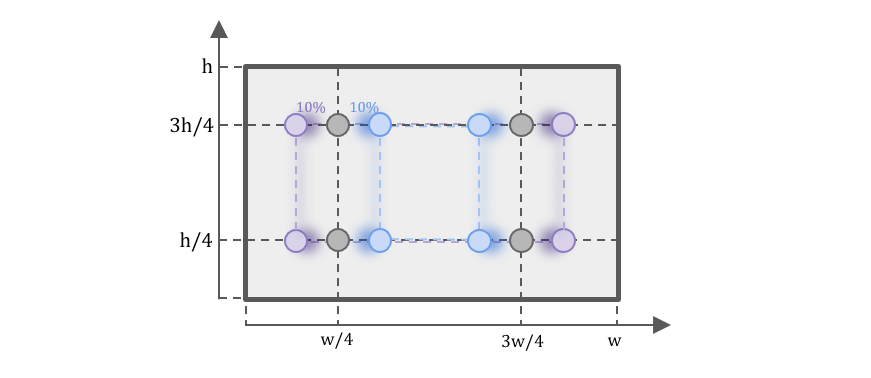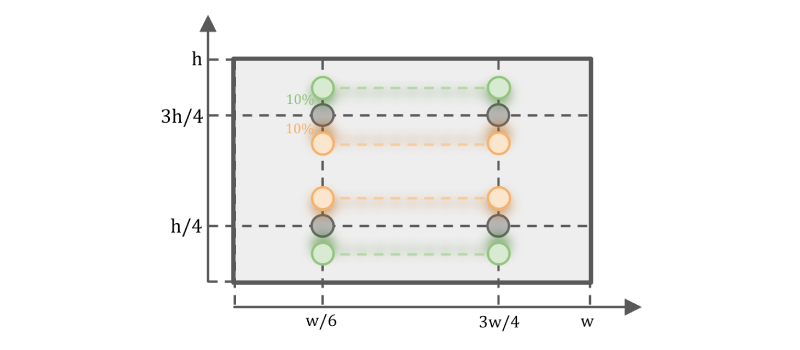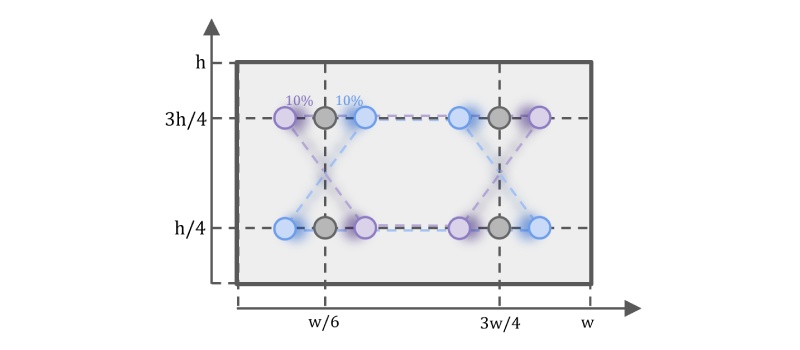A. Regular Layouts: Regular Positions
As can be seen in the illustration above (Figure 2), the ideal spacing of the subwoofers is divided up such that the space between a sub and the adjacent room surface (wall, ceiling, or floor) is half of the space between it and its adjacent sub. This spacing ensures that the reflected energy caused by those room surfaces acts as “virtual subs” with equal spacing from the adjacent, actual subs. Ideally, this spacing would hold true both horizontally and vertically. The width of the wall (“a”) is divided by the number of subs along the width of the room, and the height of the wall (“b”) is divided by the number of subs along the height of the room. (In a different room, you might have a 3 x 2 array horizontally and vertically, requiring “a/3” and “b/2” for the spacing.) We call this a “regular layout,” where “regular” refers to the consistency of the layout.
So, in a regular layout, the subwoofers are arranged to have consistent spacing (including those reflections that act as “virtual” subs), both horizontally and vertically. Hence, the distance between a subwoofer on the edge of the array and the adjacent wall must be half the distance between two adjacent subwoofer columns. Similarly, the distance between an “edge” subwoofer and the adjacent ceiling or floor must be half the distance between two adjacent rows of subwoofers.
Therefore, if A is the room width and we have C columns of subwoofers, the distance between two adjacent columns is a/C, and the distance from a side subwoofer to its adjacent wall is a/2C. Similarly, for height b and R rows, the distance between two adjacent rows is b/R, and that from the lower/upper row to the floor/ceiling is b/2R.
Note that, with WaveForming, the number of front-emitting subwoofers does not have to be equal to the number of rear absorbing subwoofers. The particular layout where the two arrays have the same dimensions and number of subwoofers is known as the Double Bass Array (DBA). Figure 2 shows a 4-4 regular layout with 2×2 arrays in a room of width a and height b.
B. Ideal Layouts: Ideal Number of Subwoofers
The spacing between subwoofers determines the upper-frequency limit that can be effectively controlled as a planar wave. This derives from the fact that higher frequencies have shorter wavelengths and the emitting subwoofers within a certain portion of that wavelength from each other in order for the planar wave formation to work well. (There is no cheating the laws of physics).
The ideal layout is a regular layout in which the arrays have the same dimensions. In such a layout, the positions of the rows and columns of subwoofers are dictated by the room’s height and width, respectively. Furthermore, the distance between two subwoofers determines the optimization’s bandwidth. Therefore, for any given size room, the number of rows and columns determines the upper limit of the controlled bandwidth.
Figure 3 and the following calculator give the number of rows and columns of the ideal layout for a given width and height for a typical bandwidth up to 100Hz. Note that since we propose a discrete output (the number of subwoofers) for a continuous input (the dimensions of a wall), the bandwidth would not be the same for all combinations of room dimensions. Therefore, when at least one of the dimensions is within 15 cm of the limit, the calculator gives a warning, represented by the gray areas in Figure 3.



